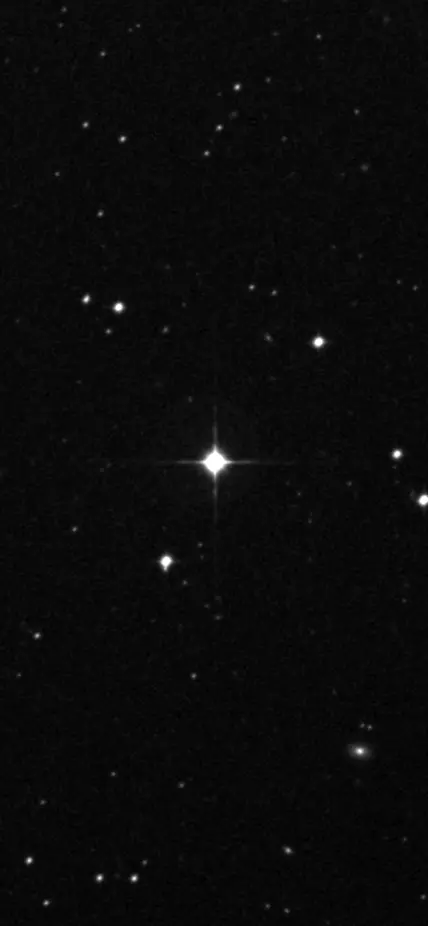Pasadena, CA— A team of astronomers led by University of Michigan’s Ian Roederer and including Carnegie’s Erika Holmbeck have identified the widest range of elements yet observed in a star beyond our own Sun. Their findings are published in The Astrophysical Journal Supplement Series.
The researchers identified 65 elements in the star, which is called HD 222925. Of these, 42 are from the bottom of the periodic table. Their identification will help astronomers understand one of the main methods by which the universe’s heavy elements were created—rapid neutron capture process.
"To the best of my knowledge, that's a record for any object beyond our Solar System. And what makes this star so unique is that it has a very high relative proportion of the elements listed along the bottom two-thirds of the periodic table. We even detected gold," explained Roederer, a former Carnegie postdoc. "These elements were made by the rapid neutron capture process. That's really the thing we're trying to study: the physics in understanding how, where and when those elements were made."
Many elements are formed by nuclear fusion, in which two atomic nuclei fuse together and release energy, creating a different, heavier atom. But elements heavier than zinc are made by a process called neutron capture, during which an existing element acquires additional neutrons one at a time that then “decay” into protons, changing the makeup of the atom into a new element.
Neutrons can be captured slowly, over long periods of time inside the star, or in a matter of seconds, when a catastrophic event causes a burst of neutrons to bombard an area. Different types of elements are created by each method. But it’s the second one that’s of interest to this research.
“Astronomers debated for many years about what phenomena could trigger such a bombardment and in 2017 it was confirmed that heavy elements could be created by the collision of two neutron stars—a discovery in which Carnegie astronomers played a crucial role,” Holmbeck said. “Certain types of supernovae could possibly also produce these heavy elements, but that remains to be observationally confirmed.”
Holmbeck is working on a follow-up paper to determine whether the chemical abundances observed in HD 222925 were formed by a neutron star merger or a supernova.
“The additional elements identified in this study provide a new baseline that can be compared to simulations, which we can use to reveal the origin story of the heavy elements seen in HD 222925's unique chemical signature.”
The material the team identified in HD 222925 was synthesized very early in the universe’s youth. It was ejected and thrown back into space, where it later reformed into the star they were studying. This means that HD 222925 can be used as a proxy for what a neutron star merger or supernova would have produced.
Crucially, the astronomers used an instrument on the Hubble Space Telescope that can collect ultraviolet spectra. This was key in allowing the astronomers to collect light in the ultraviolet part of the light spectrum—light that is faint, coming from a cool star such as HD 222925. The astronomers also used one of the Magellan telescopes at Carnegie’s Las Campanas Observatory in Chile to collect light from HD 222925 in the optical part of the light spectrum.
These spectra encode the "chemical fingerprint" of elements within stars, and reading these spectra allows the astronomers not only to identify the elements contained in the star, but also how much of an element the star contains.
"We now know the detailed element-by-element output of some r-process event that happened early in the universe," said co-author Anna Frebel of MIT. "Any model that tries to understand what's going on with the r-process has to be able to reproduce that."
Many of the study co-authors are part of a group called the R-Process Alliance, a group of astrophysicists dedicated to solving the big questions of the r-process. This project marks one of the team's key goals: identifying which elements, and in what amounts, were produced in the r-process in an unprecedented level of detail.
Acknowledgments
This work was supported by NASA through grants from the Space Telescope Science Institute, which is operated by the Association of Universities for Research in Astronomy, Incorporated, under a NASA contract; the U.S. National Science Foundation; the NASA Astrophysics Data Analysis Program; the U.S. Department of Energy, and NOIRLab, which is managed by AURA under a cooperative agreement with the NSF.
